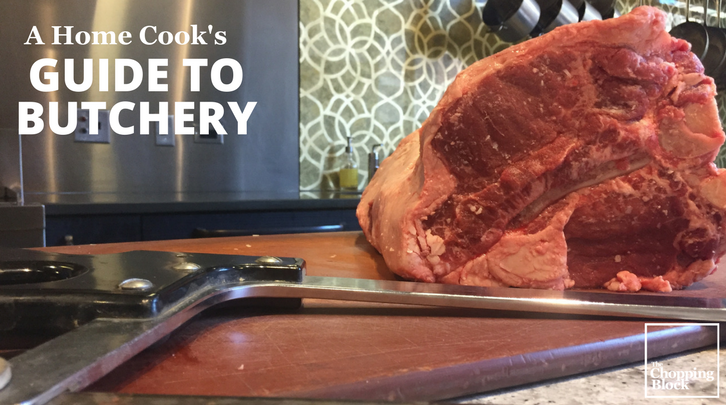The meat case is one of the most confusing areas of the supermarket. You likely need the butcher's help deciphering the labels and identifying various cuts of meat in order to know what you are buying. What exactly do terms like "natural" and "organic" really mean? And once you do decide on a cut, how to you know if it should be braised, grilled or sautéed?
The Chopping Block's new A Home Cook's Guide to Butchery explores basic home butchery (so no, we won't be covering how to break down a whole pig, but we do have a class for that!). In this free guide, you'll learn how to go beyond the basic steaks and chops you are used to seeing shrinkwrapped in the meat case. You'll get information on the different cuts and where they come from, as well as techniques for breaking down and cooking beef, pork, lamb, chicken and fish. We explain the government's slightly complicated grading system, plus the necessary equipment you'll need to butcher at home.
One of the biggest reasons we advocate for home cooks learning how to work with bigger cuts of protein (like a whole tenderloin, fish or chicken) is cost savings. Have you ever compared the cost of a whole chicken to a chicken already cut into breasts, wings, legs and thighs? The U.S. Department of Labor reports the average price of a whole chicken was $1.50 per pound in July 2017. The price of boneless, skinless chicken breasts is $3.20 per pound. That's more than double the price!
We'll teach you how to break down a chicken in our guide to home butchery, as well as a technique called "spatchcock" which is as much fun to do as it is to say. Watch our Owner/Chef Shelley Young demonstrate how easy this is (and why you'd want to do it in the first place) in our video:
That's just one of many videos in this guide to help you. We also have step-by-step pictorials of how to break down a primal cut of beef to get porterhouse, T-bones, New York Strip steaks and Filet Mignon, depending on how you cut it. You'll get tips from our professional chefs to help you along the way, with plenty of recipes to practice your new skills.
If you want some hands-on experience working with meat, chicken and seafood, our 101 cooking series is the place to start!
- Meat 101 Monday, September 25 6pm Merchandise Mart
- Chicken 101 Wednesday, October 11 6:30pm Lincoln Square
- Seafood 101 Monday, October 30 6pm Merchandise Mart











